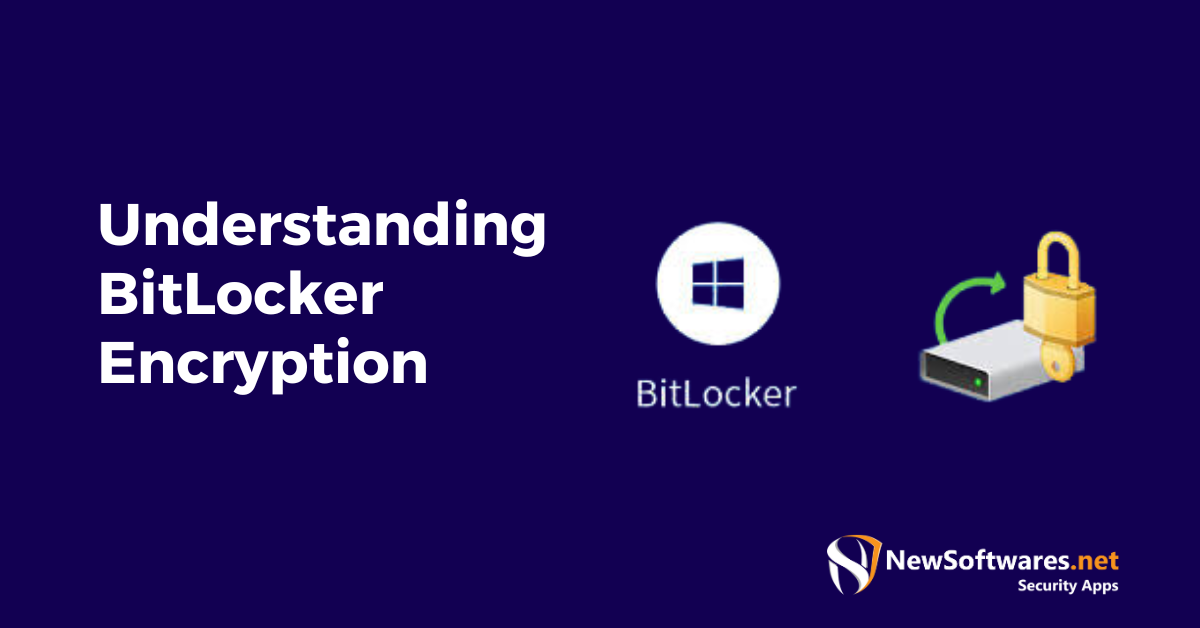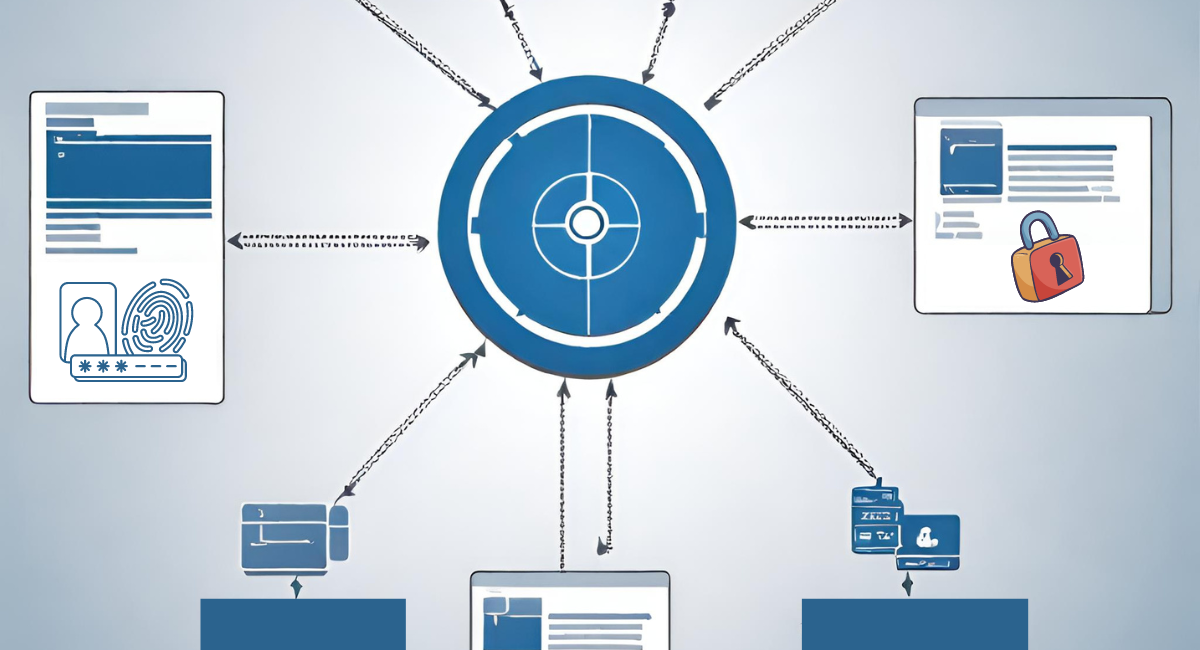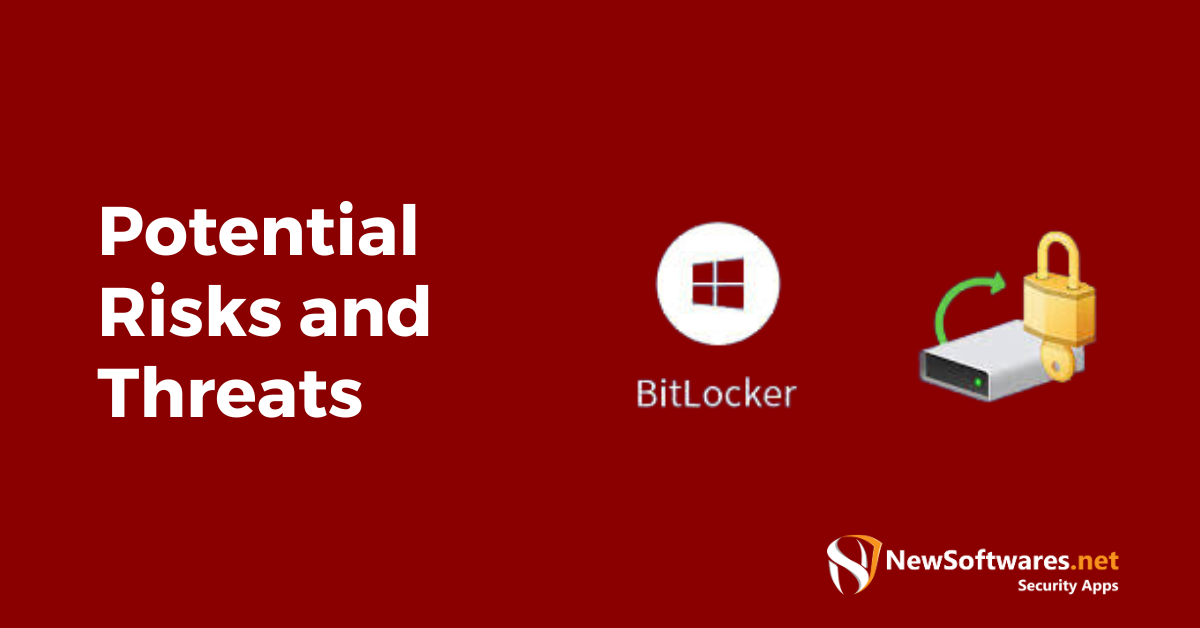Deleted data encrypted with BitLocker remains secure unless the encryption key is compromised.
BitLocker is a widely used encryption tool to protect data stored on Windows operating systems. It provides a layer of security by encrypting the entire drive, ensuring that unauthorized individuals cannot access the stored information. However, it is essential to understand the intricacies of BitLocker encryption to assess its security.
Understanding BitLocker Encryption

The Basics of BitLocker
BitLocker is a feature provided by Microsoft that allows workers to encrypt their entire hard drive, including the operating system, system files, and user data. It utilizes advanced encryption algorithms to secure sensitive information.
When BitLocker is enabled, users must enter a password or insert a USB drive with an encryption key to unlock and access the encrypted drive. This verification process adds a layer of security, ensuring that only authorized individuals can decrypt and use the drive.
How BitLocker Encryption Works?

BitLocker uses the Advanced Encryption Standard (AES) algorithm with either 128-bit or 256-bit encryption keys to secure data. This strong encryption algorithm safeguards that even if the drive falls into the wrong hands, the data remains inaccessible without the proper credentials.
BitLocker employs two primary stages to ensure data security:
- Encryption: During this stage, the AES encryption algorithm converts all the drive’s contents into an unreadable format. This process occurs in the background, ensuring minimal impact on day-to-day operations.
- Decryption: When authorized users provide the correct credentials, BitLocker decrypts the encrypted data, making it accessible once again. This decryption process occurs transparently, allowing users to access their files seamlessly.
Using encryption and decryption stages, BitLocker ensures that data remains secure, even if the physical drive is lost or stolen.
The Advanced Encryption Standard (AES)
The Advanced Encryption Standard (AES) is a symmetric encryption algorithm selected by the U.S. National Institute of Standards and Technology (NIST) as the standard for encrypting sensitive information. It is widely recognized as one of the most secure encryption algorithms available.
AES operates on blocks of data, typically 128 bits in size, and uses a cryptographic key to transform the data into an unreadable format. The strength of AES lies in its ability to perform multiple rounds of encryption, each round adding complexity and making it more difficult for unauthorized individuals to decrypt the data.
BitLocker allows users to choose between 128-bit and 256-bit encryption keys when enabling encryption. The greater the key size, the stronger the encryption and the more secure the data becomes. However, it’s important to note that larger key sizes may result in slightly slower encryption and decryption speeds.
The Benefits of BitLocker Encryption
BitLocker encryption provides several benefits for users and organizations:
- Data Protection: By encrypting the entire hard drive, BitLocker ensures that sensitive information remains protected, even if the drive is lost, stolen, or accessed by unauthorized individuals.
- Transparent Operation: Once enabled, BitLocker works in the background, encrypting and decrypting data seamlessly without interrupting the user’s workflow.
- Centralized Management: Organizations can manage BitLocker encryption through Group Policy, allowing for centralized control and configuration of encryption settings across multiple devices.
- Compatibility: BitLocker is compatible with various Windows operating systems, including Windows 10, Windows 8, and Windows 7, making it available to a wide range of users.
- Trusted Platform Module (TPM) Integration: BitLocker can leverage the security capabilities of a TPM, a hardware component that provides additional protection against unauthorized access to the encryption keys.
Overall, BitLocker encryption offers a robust and reliable solution for carrying sensitive data on Windows devices, providing individual users and organizations peace of mind.
The Security of Deleted Data
The Process of Data Deletion
When files are deleted from a BitLocker encrypted drive, they are not immediately removed from the disk. Instead, the information about the deleted files is marked as available space, allowing new data to overwrite it. This process helps optimize drive performance and reduces wear on the disk.
However, the security of deleted data on a BitLocker encrypted drive is a concern. Understanding the potential risks of recovering deleted files is important, especially if someone gains unauthorized access to the encrypted drive before the deleted data is overwritten.
Let’s delve deeper into the vulnerability of deleted data on a BitLocker encrypted drive and explore the factors influencing its security.
The Vulnerability of Deleted Data
The vulnerability of deleted data on a BitLocker encrypted drive depends on several factors, including the encryption mode used and the length of time it remained on the disk before being overwritten.
One key factor that significantly reduces the vulnerability of deleted data is the encryption mode employed by BitLocker. Windows 10’s default encryption mode is XTS (XEX-based Tweaked Codebook Mode with CipherText Stealing). This mode provides enhanced protection and makes it more challenging to recover deleted files.
XTS encryption mode operates by dividing the data into blocks and encrypting each block independently. This unique approach ensures that even if an attacker manages to recover a portion of the encrypted data, they cannot use it to decrypt the entire file. This makes the recovery of deleted files a complex and time-consuming process.
Additionally, the time that deleted data remains on the disk before being overwritten also plays a crucial role in its vulnerability. The longer the data remains on the disk, the higher the chance it is recovered. Therefore, it is advisable to overwrite the deleted data as soon as possible to minimize the risk of unauthorized access.
It is worth noting that while XTS encryption mode significantly reduces the vulnerability of deleted data, it does not guarantee absolute security. Advanced forensic techniques and specialized software may still be able to recover some traces of the deleted files, albeit with great difficulty.
To further enhance the security of deleted data, it is recommended to follow best practices such as regularly updating the operating system and BitLocker, using strong and unique encryption keys, and implementing additional security measures such as multi-factor authentication.
In conclusion, while BitLocker’s encryption and data deletion processes provide a certain level of security, it is important to understand the potential dangers of recovering deleted data. By employing robust encryption modes like XTS and promptly overwriting deleted data, users can significantly reduce the vulnerability of their sensitive information.
BitLocker and Deleted Data
How BitLocker Handles Deleted Data
BitLocker incorporates measures to mitigate the vulnerability of deleted data. It utilizes techniques like overwriting space with random data, making it harder to recover previously deleted files.
When BitLocker deletes a file, it overwrites the corresponding sectors on the drive with random data, ensuring the original file content is irrecoverable. These processes help safeguard sensitive information and reduce the risk of data breaches.
The Security Measures for Deleted Data
To further enhance the security of deleted data, it is recommended to periodically perform disk defragmentation and enable the use of the “Run Disk Cleanup” tool on Windows. These actions help ensure that remnants of previously deleted files are overwritten, reducing the chances of data recovery.
Potential Risks and Threats

Common Threats to BitLocker Encrypted Data
While BitLocker encryption provides a robust security solution, it is not immune to potential risks and threats. Some common threats to BitLocker encrypted data include:
- Brute Force Attacks: Attackers attempt to crack the encryption by systematically guessing the password or encryption key.
- Physical Attacks: Unauthorized individuals gaining physical access to the device can compromise the encrypted data’s security.
- Malware: Malicious software could attempt to bypass or exploit vulnerabilities in BitLocker to gain unauthorized access to encrypted data.
Assessing the Risk Level
Assessing the risk level associated with BitLocker encrypted data involves considering various factors, such as the strength of the password or encryption key, the physical security of the device, and the measures taken to protect against potential malware threats.
It is crucial to apply additional security measures to mitigate these risks further and ensure the overall security of the encrypted data.
Enhancing BitLocker Security
Best Practices for Using BitLocker
To maximize the security provided by BitLocker encryption, consider implementing the following best practices:
- Use Strong Passwords: Select a password that combines capital and lowercase letters, numbers, and special characters to create a strong and memorable passphrase.
- Activate Two-Factor Authentication: Enable two-factor authentication, such as a USB token or a smart card, to provide an extra layer of security.
- Regularly Update the System: Keep the operating system and security software up to date to address any potential vulnerabilities or weaknesses.
Additional Security Measures
In addition to the best practices mentioned above, consider implementing additional security measures such as:
- Using a Trusted Platform Module (TPM): Utilize the TPM chip integrated into many modern computers to enhance BitLocker security through hardware-based encryption and authentication.
- Implementing Group Policies: Configure and enforce specific security settings through group policies to enhance the security of BitLocker encrypted data on multiple devices within an organization.
By implementing these additional security measures and following best practices, you can considerably enhance the overall security level of BitLocker encrypted data.
Key Takeaways
- BitLocker uses strong encryption algorithms.
- Without the encryption key, recovering deleted data is almost impossible.
- The physical security of the device is crucial.
- Regularly backup and safeguard your recovery keys.
- Securely wiping storage ensures further protection of deleted data.
FAQs
Q: What algorithm does BitLocker use?
A: BitLocker primarily uses AES encryption.
Q: How do I keep my encryption key safe?
A: Store it securely, away from your computer, and use strong passwords.
Q: Can deleted data be recovered from a BitLocker drive?
A: Without the key, it’s extremely difficult.
Q: Should I be worried about hardware attacks?
A: Physical security is essential; ensure device safety to prevent such attacks.
Q: How do I securely wipe a BitLocker drive?
A: Use tools that perform multiple overwrite passes.
Conclusion
In conclusion, BitLocker encryption provides a robust solution for securing data on Windows systems. It employs powerful encryption algorithms and authentication processes to prevent unauthorized access. While the vulnerability of deleted data may be a concern, BitLocker incorporates measures to mitigate this risk. By following best practices and executing additional security measures, users can further enhance the security of their encrypted data.
